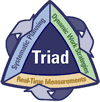
| Site Name | 45th Space Wing ? Cape Canaveral Air Force Station and Patrick Air Force Base |
| Location | Cape Canaveral, FL |
| Site Type |
Federal Facility |
| Project Lead Type |
U.S. Air Force Lead |
| Reuse Objective Identified |
No |
The site encompasses 45th Space Wing facilities at Canaveral Air Force Station and Patrick Air Force Base that serve as the proving ground for the U.S. Space Program and have been the site of over 3,120 launches. This includes 320 solid waste management units, 1,200 acres of contaminated groundwater, and extensive soil contamination. Seven major cleanup actions were executed between 2003 and 2008, with two more planned in the future. Challenges include integrating with mission requirements and reuse plans, minimizing review and coordination time, changing stakeholders, and processing inconsistencies. In order to streamline the cleanup program, increase stakeholder confidence, and maximize efficiency, Triad concepts were employed to provide tools for consistent planning and reporting, ensure information availability to stakeholders, and optimize the remediation decision process.
The objectives for this project were to:
Past experience demonstrated that regimented and inflexible program administration hampered the investigation and cleanup process at individual sites, slowing the overall progress of the program. Applying the core Triad principles to program management helped streamline the entire restoration process from cradle to grave and established a programmatic framework that facilitates application of the same concepts at site-level within individual projects. How does Triad translate into the program management paradigm? Management processes and tools were customized to address the six project objectives described above.
Millions of dollars have been saved and years of effort eliminated as a result of Triad-based program management. Following a less regimented process has allowed phases of work to be combined or completely eliminated at various sites, dramatically compressing the long-term schedule. On-board reviews conducted at the partnering table helped accelerate field schedules and allowed quick resolution of issues that might otherwise have been discussed for months via formal correspondence.
Systematic planning was addressed through several measures:
Formal Partnering, on-board stakeholder reviews, and Web-based information management tools (see "real-time technologies") facilitate streamlined decision-making and build stakeholder confidence in the cleanup process. Programmatic guidance documents approved by all stakeholders provide a consistent framework, but build flexibility into the field process. For example, this allows field personnel to continue delineation beyond the explicit workplan sampling schema, applying standardized sampling procedures. Additionally, building flexibility into the planning process and employing real-time data collection techniques in the field have allowed for successful Triad-based remediation. This is technology-dependent, as not all remediation technologies lend themselves to a dynamic approach. Where it has been feasible, flexible Triad-based remediation has proven very successful, allowing field personnel to dynamically adjust the remediation plan as dictated by real-time screening data, customizing the treatment depth and treatment area. This increases project success of remedial projects, while ensuring that available funding is used in the most effective manner possible.
Leveraging real-time or near-real time information management technologies has proven particularly helpful to ingrain Triad at a programmatic level. Indexing and organizing all data consistently and in a user-friendly manner; making workplans, reports, and data readily available to stakeholders; developing standard rollups/reports that can be run at the touch of a button; and providing easy graphical or geo-spatial data visualization all help communicate information quickly, build stakeholder confidence, and streamline the decision process. A searchable electronic archive of all programmatic and site-related documents and correspondence was created on the Internet and made accessible to all stakeholders. This Web site provides several search capabilities for users from novice to expert and also provides basic geographical context for each cleanup site.
A local database was developed to comprehensively track all site information, cross-referencing and integrating past, present and future phases of work, regulatory deliverable requirements, partnering team and RAB discussions and decisions, documents and correspondence (through an interface with the electronic archive Web site), cleanup statistics, land use control requirements, remedy decisions, and long-term monitoring specifications. This tool has greatly increased the accessibility of data, making it easy to reference past decisions and existing documentation in meetings or on the road, often resolving upfront what would otherwise be "action items," research projects, or lengthy deliberations. Geographic information system (GIS) layers were created for visualization of SWMUs, groundwater plumes, remediation systems, and sampling points. All database information can be visualized through the GIS using these layers, creating opportunities to build customized tools for analytical data analysis and land use control.
To update this profile, contact Cheryl T. Johnson at Johnson.Cheryl@epa.gov or (703) 603-9045.